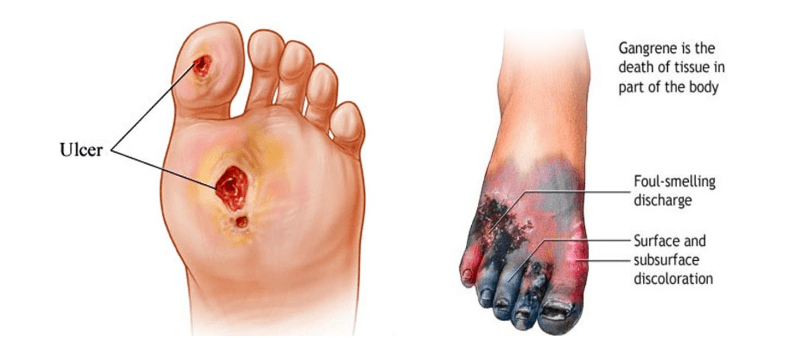Critical Limb Ischemia
Limb Ischemia is a condition that can affect a person’s limbs and is characterized by a narrowing of the arteries that supply nutrients and oxygen to the limb in question. This may result in eventual tissue death if left untreated. It is classified into three categories: acute, critical, and chronic limb ischemia. Critical limb ischemia (CLI) comes about when the artery leading to a person’s arms or legs is obstructed by a blood clot or piece of plaque.
Signs You Might Have Critical Limb Ischemia
There are several signs and symptoms that might indicate CLI. Should you experience or exhibit any of these, consult a healthcare professional as soon as possible. They include:
- Smooth, shiny, and dry skin on your legs and feet
- Skin infections, open sores, and ulcers that refuse to heal
- Thickening toenails
- Dry, black skin (dry gangrene) of the feet or legs
- Numbness or pain in the limbs
- An absent or diminished pulse in your feet or legs

Causative Factors of Critical Limb Ischemia
Numerous risk factors are associated with CLI, and some are more easily avoided than others. Even though not everyone with one or more of these qualities or habits will develop the condition, it’s important to be aware of them. They include:
- Existing diabetes
- High cholesterol levels
- High blood pressure
- Being obese or overweight
- Sedentary lifestyles (with little exercise or physical activity)
- A family history of claudication or atherosclerosis
- Smoking
- Old age

It’s important to note that many of these factors can be mitigated or influenced by our choices and behavior. To help reduce your level of risk, you can:
- Stop smoking
- Ensure you get regular exercise
- Switch to a heart-healthy diet
- Make efforts to lower your cholesterol and blood pressure through lifestyle changes and medication
Treatment Options for Critical Limb Ischemia
Because the consequences of Critical Limb Ischemia can be so dire if left unchecked, an intervention must be carried out as soon as possible. These measures can be categorized into wound treatments, medications, and vascular surgery. They include:
- Medication to manage peripheral arterial disease and atherosclerosis and mitigate pain
- High cholesterol and high blood pressure medication
- Wound treatments for infected or non-healing wounds
- Laser atherectomy, which involves introducing a catheter with a laser attachment into the blood vessel to vaporize the obstructing bits of plaque
- Directional atherectomy, which involves using a rotating cutting blade fixed to the tip of a catheter to physically cut out the plaque
- Endarterectomy, where a vascular surgeon opens up the artery and manually removes plaque from its walls
- Angioplasty, where a vascular surgeon introduces a catheter into your groin and proceeds to thread it until it reaches the obstruction. Once here, a small balloon at the tip of the catheter will be inflated, effectively widening the opening and pressing down the obstruction. After this, a supportive stent will be placed in the vessel to keep it from collapsing on itself later on.
- As a measure of last resort, your vascular surgeon may be forced to amputate the affected limb if no viable options remain
Final Thoughts
Critical Limb Ischemia is a serious condition to contract, but medical advancements have given us the tools and techniques to combat it effectively. To give yourself the best chances of managing and beating the condition, keep a keen eye out for the warning signs and symptoms, avoid the risk factors wherever possible, and consult a medical professional as soon as you experience any suspicious signs and symptoms.



